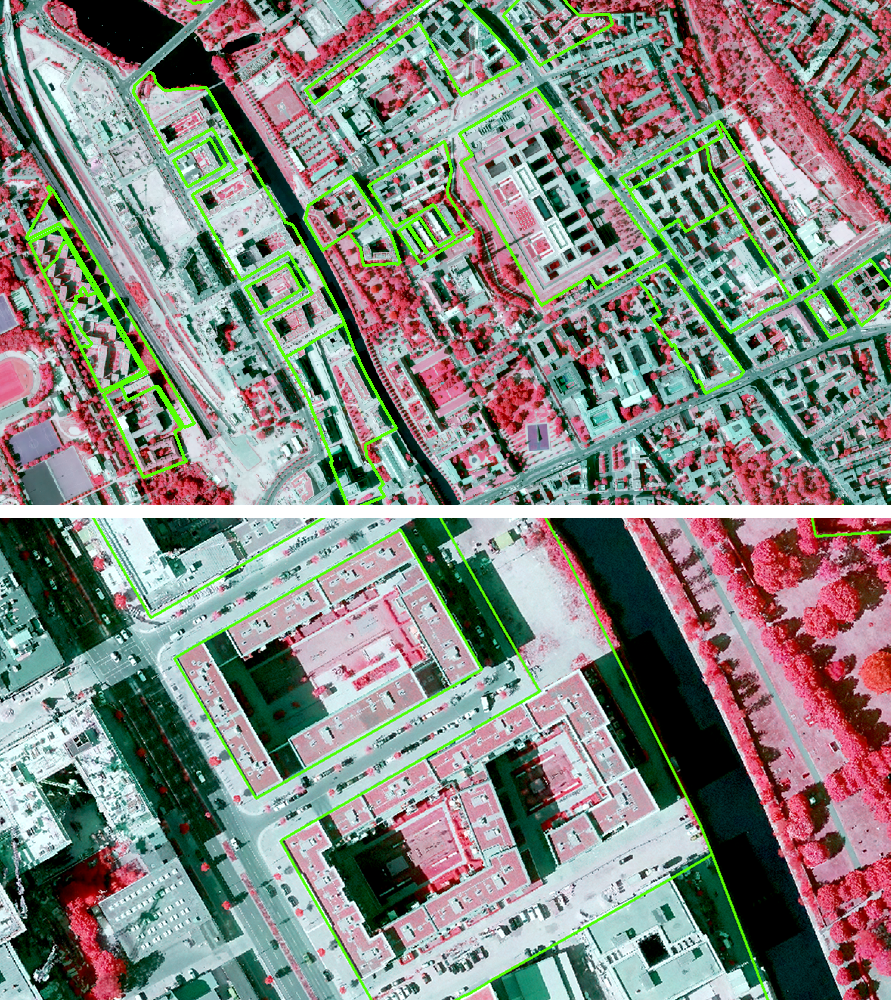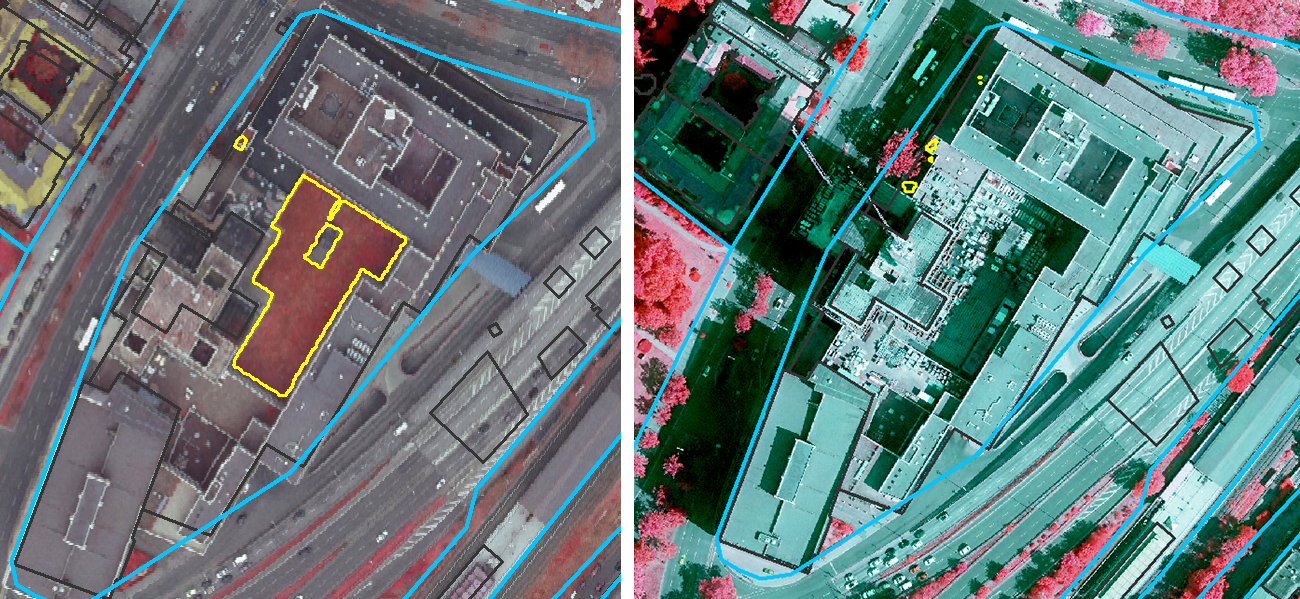The total area of green roofs increased by 165 ha between 2016 and 2020. The share of green roof areas therefore rose from 3.0 to 3.2 %. Almost half (approx. 75 ha) of the new green roof areas were added to buildings with residential use. This is reflected in the results of the area type analysis (cf. Tab. 3). About 53 ha of roofs were newly greened in the area type “Settlement from the 1990s and later”. Another 17 ha of green roof area were created in the area type “Closed block development, rear courtyard, 5-6 storeys”, which is mostly found in the inner city boroughs. The building types “Non-residential buildings and “Office buildings, commercial” received almost 40 ha of rooftop greenery, while it was about 28 ha for “Underground car parks without superstructures”.
An initial analysis at the borough level indicates that both the share of the number of buildings with green roofs in relation to the total number of buildings and the share of green roofs in relation to the floor area of the buildings increased across all boroughs. A differentiated analysis reveals that roof shapes suitable for greening are more likely to be found in the inner city boroughs, as are new green roofs. In the boroughs of Mitte and Friedrichshain-Kreuzberg, the number of green roofs in the total number of buildings increased by 2 and 3 % respectively. The green roof area in the borough of Treptow-Köpenick increased by about 20 ha, which is also remarkable (cf. Fig. 4). Here, a lot of new residential and commercial buildings with green roofs were built in the area of Adlershof.
The ‘change mapping’ below illustrates how the green roof area (in %) has changed in relation to the block (segment) area and how it is distributed across the city.

![Enlarge photo: Fig. 7: Change mapping of the green roof area share in the block (segment) area [%] between 2016 and 2020](/imgscaler/ca-_bMJldBjfq43OQsQ6dQHtStxDDbqU23pJN3jzzp0/ropen/L3N5czExLXByb2QvdW13ZWx0YXRsYXMvX2Fzc2V0cy9udXR6dW5nL2dydWVuZGFlY2hlci9lbi1hYmJpbGR1bmdlbi9lYTYxMV8wN18yMDIwLnBuZw.png?ts=1681473684)

